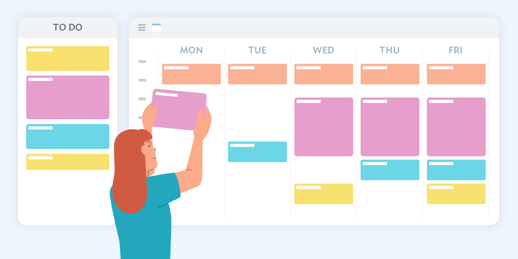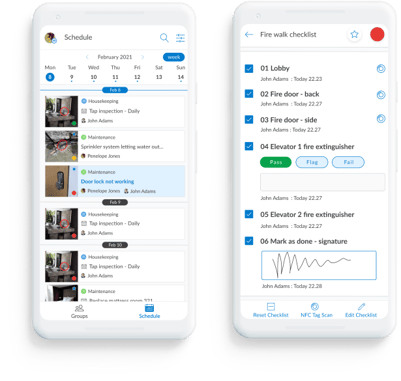 In today's fast-paced world, it's common for people to juggle multiple tasks and projects at once. But constantly switching attention from one task to another can lead to decreased productivity, increased stress and mistakes.
In today's fast-paced world, it's common for people to juggle multiple tasks and projects at once. But constantly switching attention from one task to another can lead to decreased productivity, increased stress and mistakes.
In this blog, we'll explore the concept of context switching, its negative impacts and most importantly, how to manage it better. We'll be sharing tips and strategies that can help you minimize the number of times you need to switch context and improve your focus and efficiency. Whether you're a busy professional or a student, you'll find valuable insights on how to manage your time and tasks more effectively. So, let's dive in and learn how to conquer the challenge of context switching!
What is Context Switching?
Context switching refers to the process of switching attention from one task or project to another. This can happen frequently in the workplace, particularly in roles that require multitasking or working on multiple projects at once.
On average, most people spend about 3 minutes on a task and two minutes on a digital tool. While it may seem like “time management” or “being Efficient,” the impact of context switching on an employee’s focus is bewildering. There is only so much information the brain can hold at a given time. The design of the human brain allows for processing a single task effectively at a time.
How Context Switching Affects Productivity (or The True Cost of Context Switching)
While the importance of the task is valid, handling it as soon as they’re assigned isn’t the best way to go about things in the workplace. With the level of distraction during workdays and the demand for attention, multitasking may seem like an excellent choice to save time and increase productivity, but the reality suggests otherwise.
The negative impacts of context switching include decreased productivity and efficiency, as well as an increased likelihood of mistakes. 45% of individuals confirm that context switching renders them less productive. This is because the brain has to adapt to different information and tasks each time the context is switched, which can take time and energy. On average, it takes up to nine and a half minutes to get back into a productive headspace after switching between applications and, in some cases, up to twenty-five minutes.
Additionally, context switching can lead to feelings of frustration and stress, as well as a lack of focus and concentration. Only twenty minutes of interruptions have resulted in significantly higher stress, frustration, pressure, workload, and effort.
Context switching may appear efficient, but one thing is clear, it takes up more time in the end and results in multiple errors due to poor allocation of mental effort.

Ways to Reduce Context Switching
Context switching results in a lot of time, effort, creativity, concentration, and everything needed for effective work going to waste. Despite knowing this, it’s pretty challenging to prevent context switching as, more often than not, there is no realization of it happening.
Effectively combating context switching requires enforcing new habitual tendencies and routines. Below are a few strategies to help reduce or even eliminate context switching.
- - Task Prioritization and Visualization
One effective method is to prioritize tasks and work on them in order of importance. This can help to minimize the number of times the context needs to be switched, allowing for more focused and efficient work. Understanding the scope of daily or weekly tasks enables better perspective and, therefore, effective prioritization.
One way to visualize tasks is by using to-do lists. Every task has a place on the list. Adding priority levels to tasks in order of importance, reward gained, length of task, or urgency helps narrow focus.
 - Time Blocking and Time batching
- Time Blocking and Time batching
This is an efficient way of managing time, effort, and creativity. Time blocking involves dividing schedules or workdays into blocks and assigning tasks under each. In time blocking, once you reach the expiration of the hours allocated for each task, so does the task and is no longer revisited for the rest of the workday unless in an extreme emergency.
Another strategy is to set specific times during the day for checking and responding to emails or messages, rather than constantly switching attention between tasks to do so.
- - One Task at a Time
Addressing tasks one at a time keeps the creativity flowing in one direction, enhances concentration, and ensures no backlog of work, improving productivity. In addition to proper time management, approaching each task one at a time allows the brain to work efficiently while having time to rest appropriately.
Other things that can be done to reduce context switching is practicing mindfulness techniques like meditation and yoga can help keep the mind more focused, and also taking regular breaks throughout the day can help to refresh the mind and improve focus.
Lastly, using software that helps manage tasks, such as a task management platform can do wonders for you and your team.
The Role of Snapfix in Combating Context Switching
Snapfix helps you to manage your tasks and reduce context switching in a more streamlined and simple way.
 With Snapfix, you can keep your daily tasks, and personal routines organized and assign priority and tags in whatever order you desire. Using its scheduling and calendar features, you can assign tasks to specific time frames with added rest periods to maximize productivity.
With Snapfix, you can keep your daily tasks, and personal routines organized and assign priority and tags in whatever order you desire. Using its scheduling and calendar features, you can assign tasks to specific time frames with added rest periods to maximize productivity.
To make things simple, Snapfix uses a traffic light system to track task progression. Supplementing it with Snapfix’s mandatory checklist option can ensure you don’t get the green light until the completion of specific tasks. Snapfix offers you a variety of ways to time block your schedule, prioritize tasks and gain a significant edge over the tendency to context switch.
In conclusion, context switching can negatively impact productivity, efficiency, and well-being. By prioritizing tasks, setting specific times for checking messages, using task management software like Snapfix and practicing mindfulness techniques, it is possible to minimize the negative effects of context switching and improve overall productivity and focus.
Find out more ways Snapfix can help improve your productivity today.



